Abstract
1. The effects of nerve stimulation and of the topical application of noradrenaline on arteries, capillaries and veins of the mesentery of the anaesthetized rat were examined by direct observation under a microscope. The distribution of adrenergic nerves to the vessels of the mesentery was studied using the fluorescence histochemical method.
2. Principal arteries, small arteries and terminal arterioles were all innervated by a network of adrenergic fibres and they all constricted in response to the stimulation of paravascular nerves and to exogenous noradrenaline. Few adrenergic fibres accompanied the smaller, precapillary arterioles; these vessels did not respond to nerve stimulation, although they were constricted by concentrations of noradrenaline as low as 10-10 g/ml.
3. The capillaries did not respond to nerve stimulation or to applied noradrenaline. All veins were constricted by noradrenaline, but only those veins greater than about 30 μm in internal diameter responded to nerve stimulation.
4. At stimulus frequencies greater than 4 Hz the flow of blood through the microvasculature usually ceased, although there was never complete closure of these vessels. The maximum constriction observed in principal arteries was usually between 50 and 70% of the control internal diameter, and in small arteries and terminal arterioles was between 40 and 65% of the control internal diameter.
5. It is concluded that the principal arteries and small arteries of the mesenteric vasculature are important in the control of blood flow through this vascular bed during sympathetic stimulation and following topical application of noradrenaline, and that the precapillary arterioles are important vessels determining the rate of blood flow through the capillary bed under resting conditions.
Full text
PDF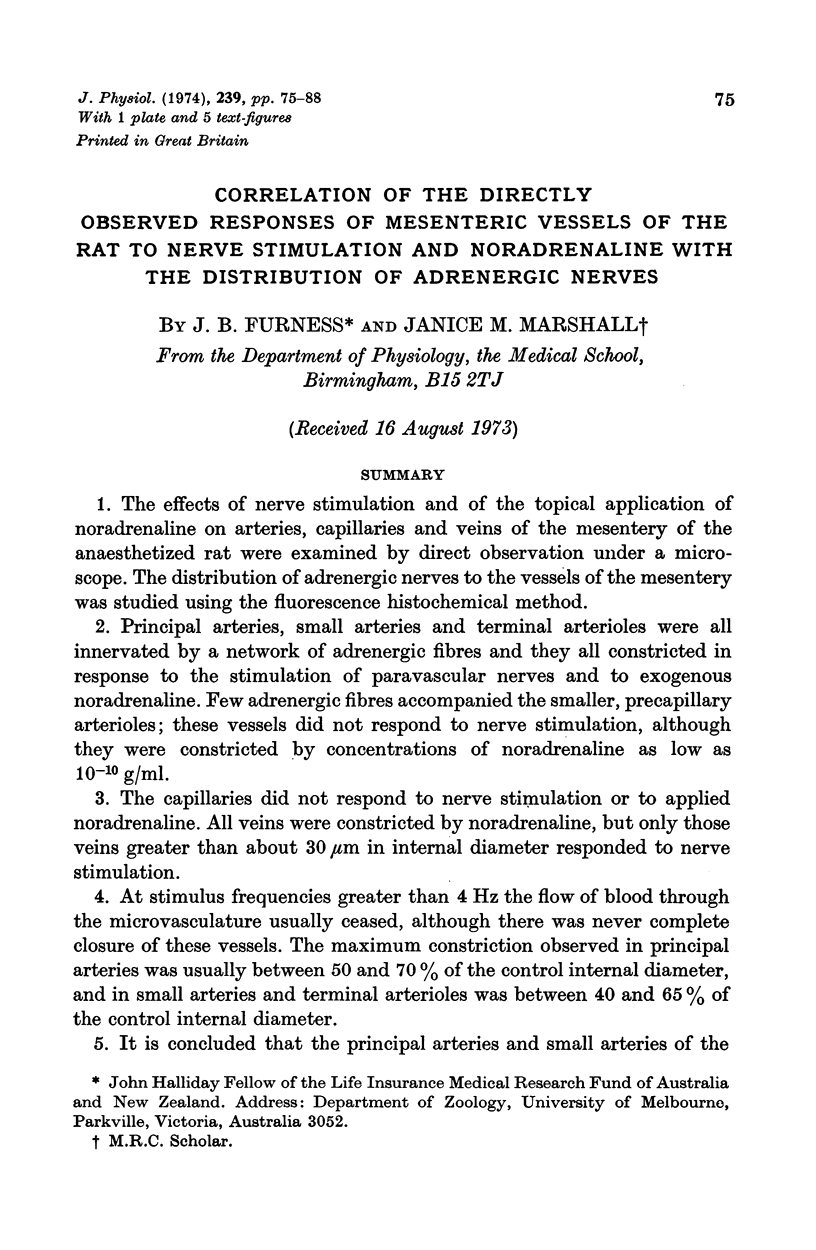
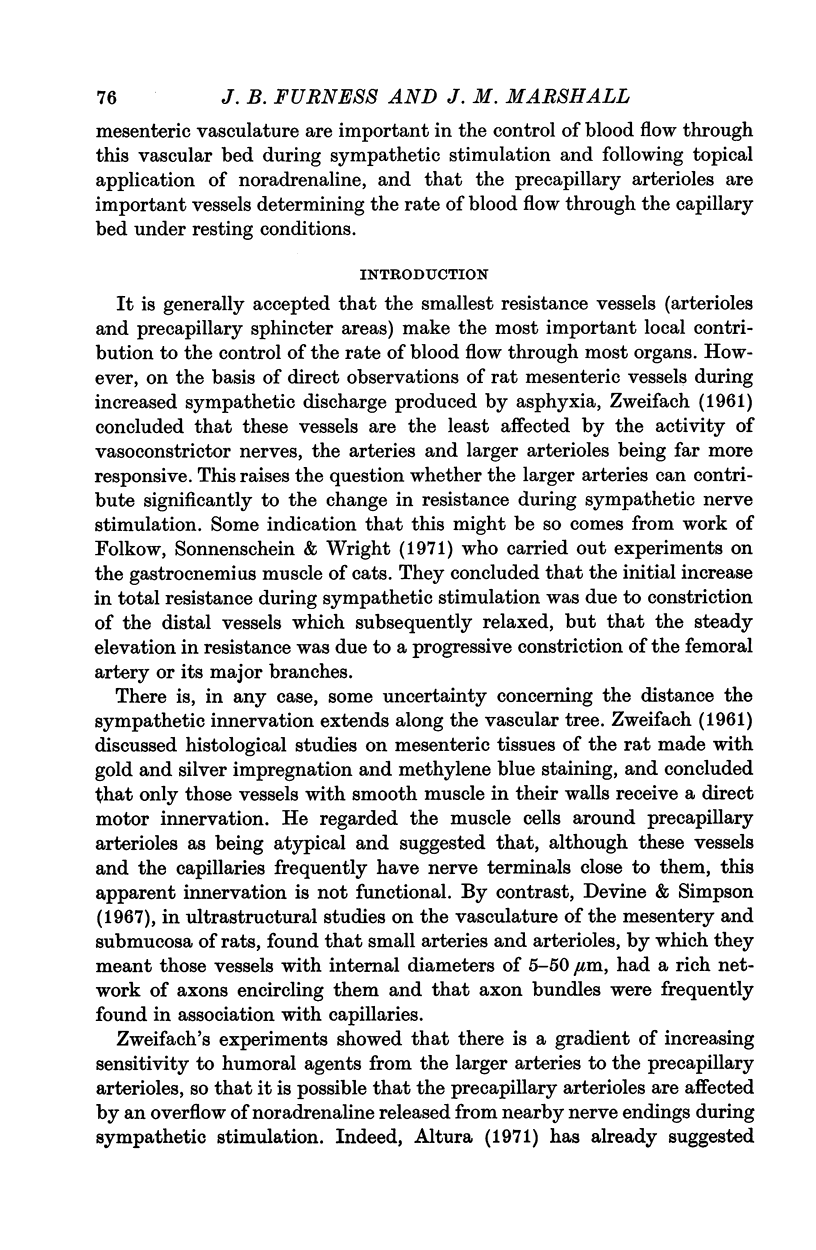
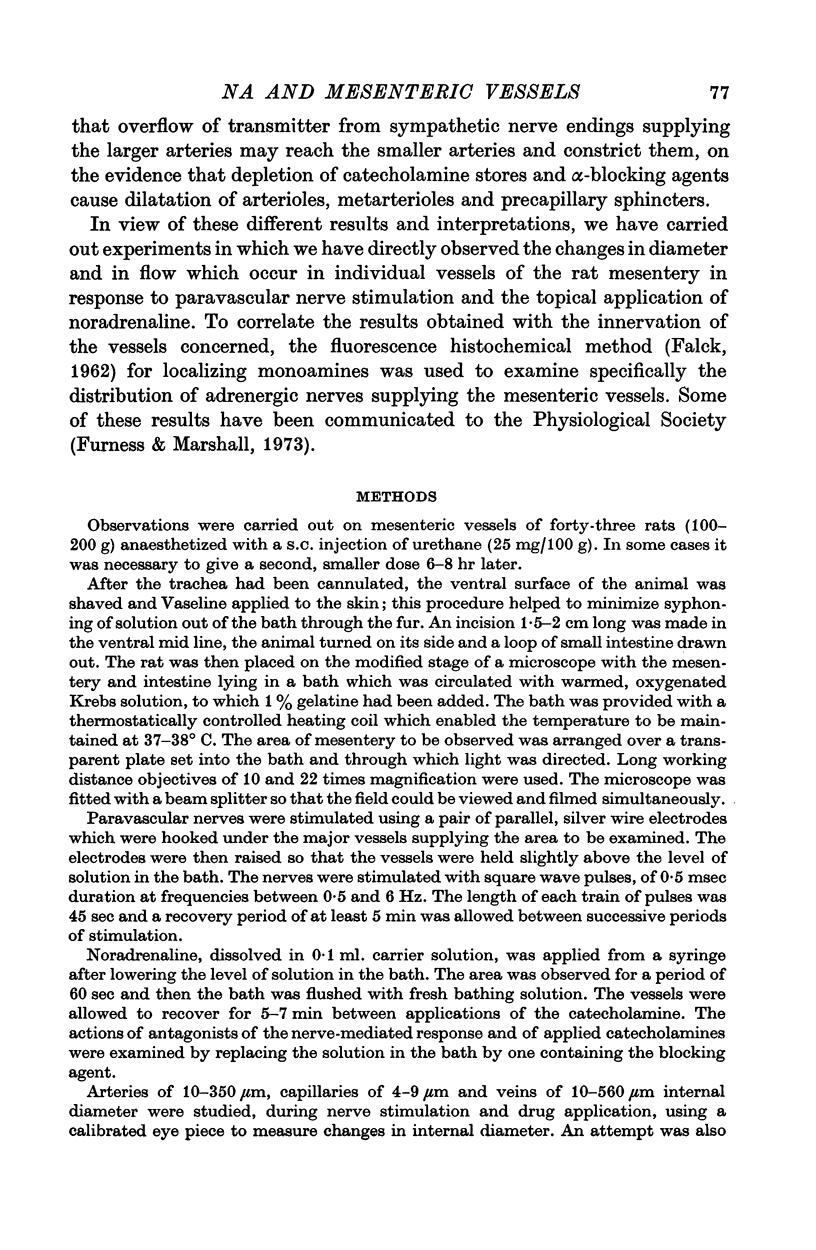
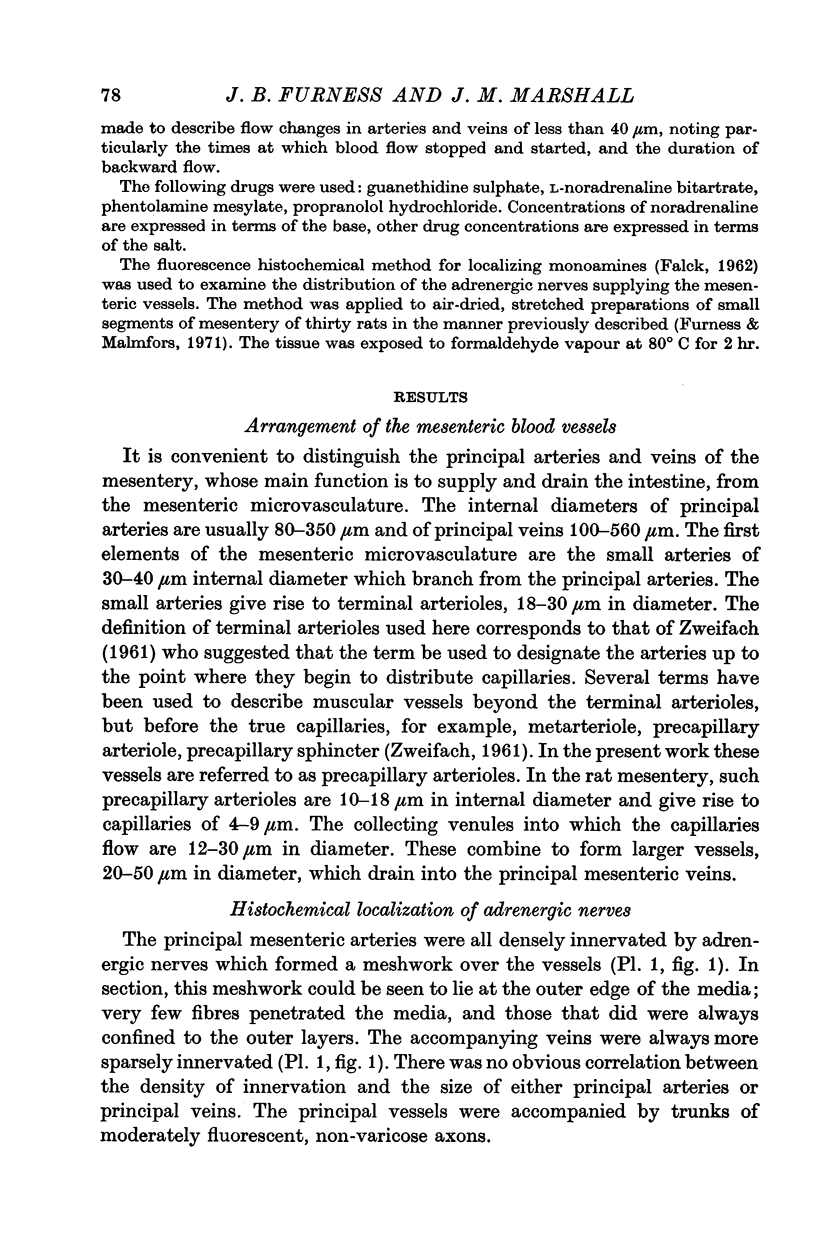
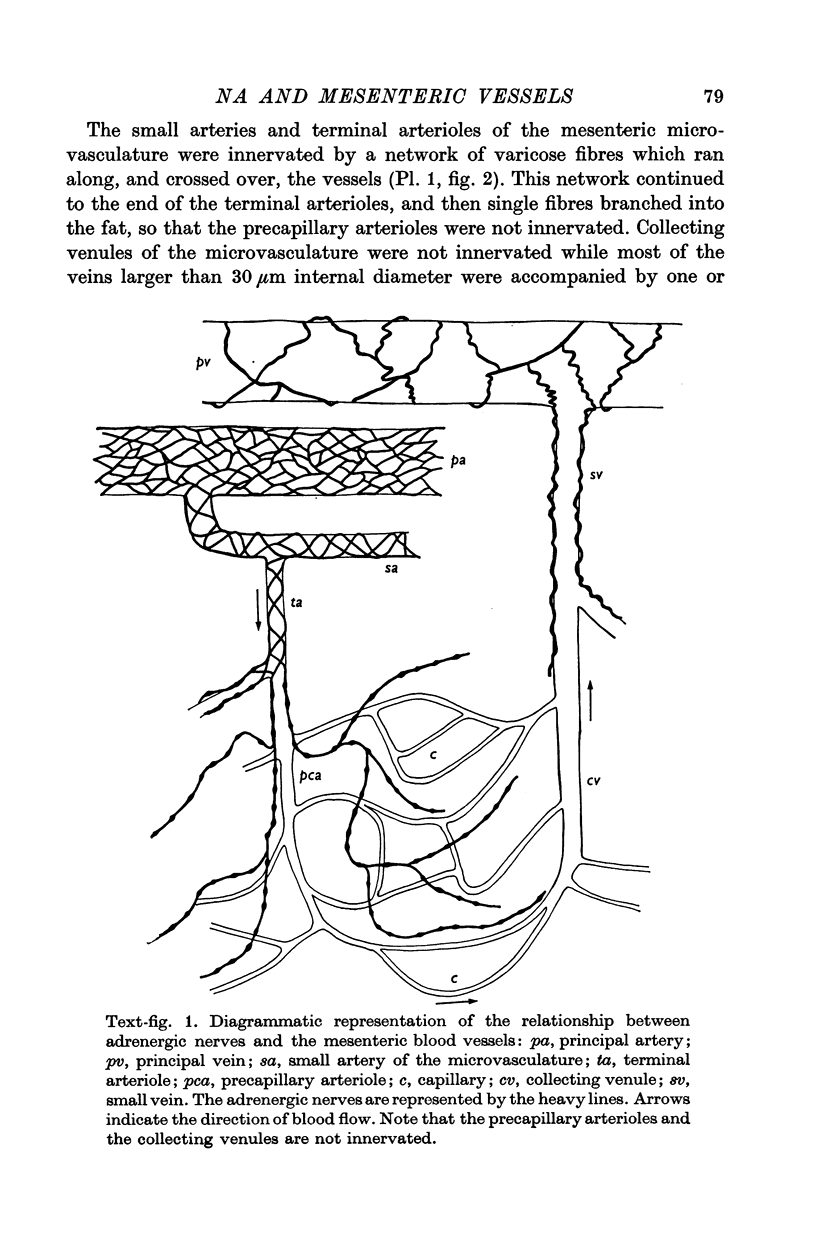
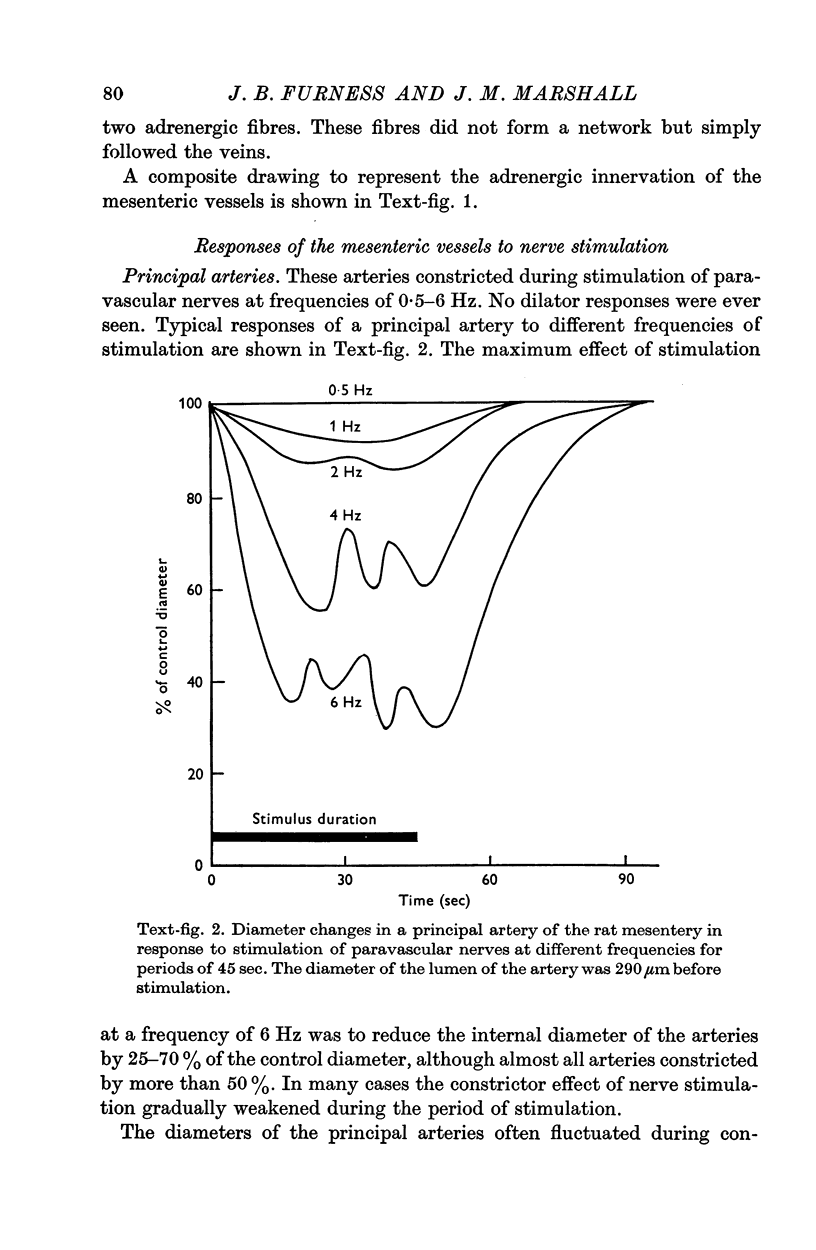
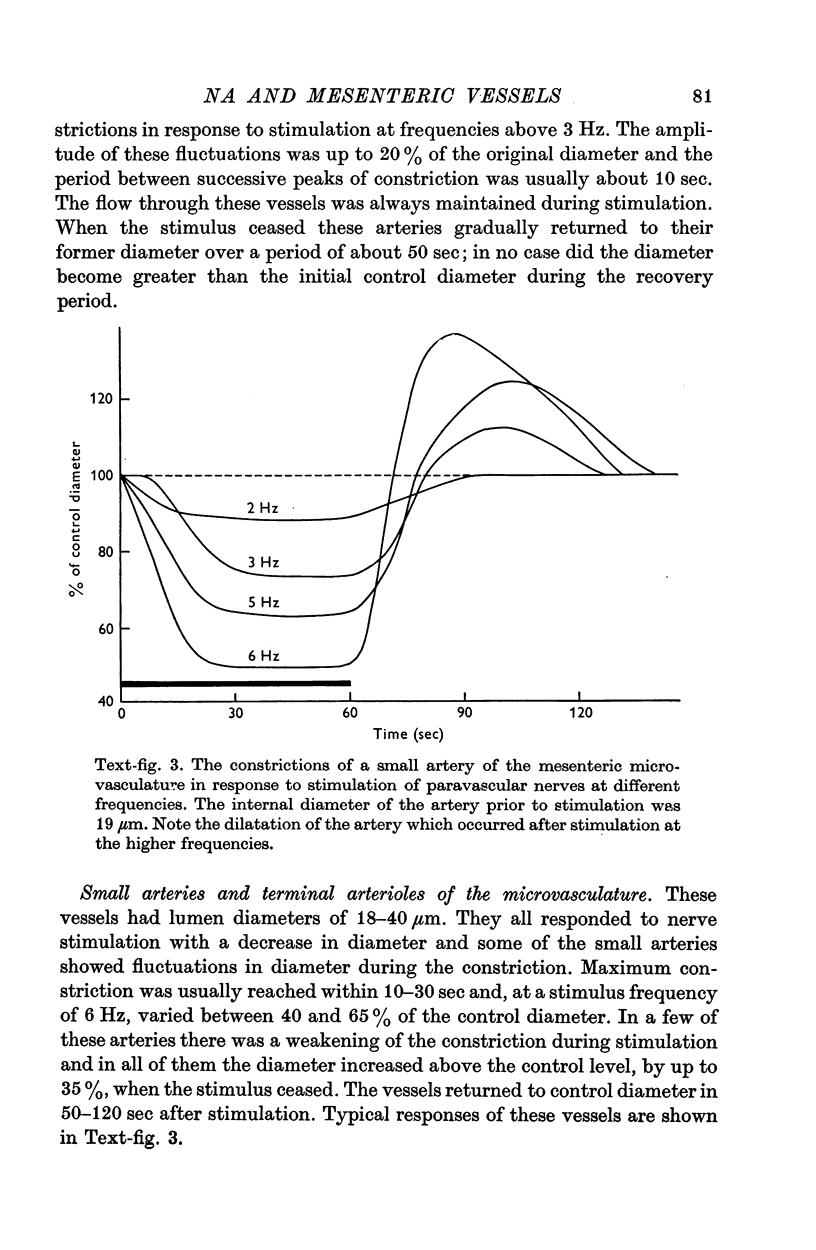
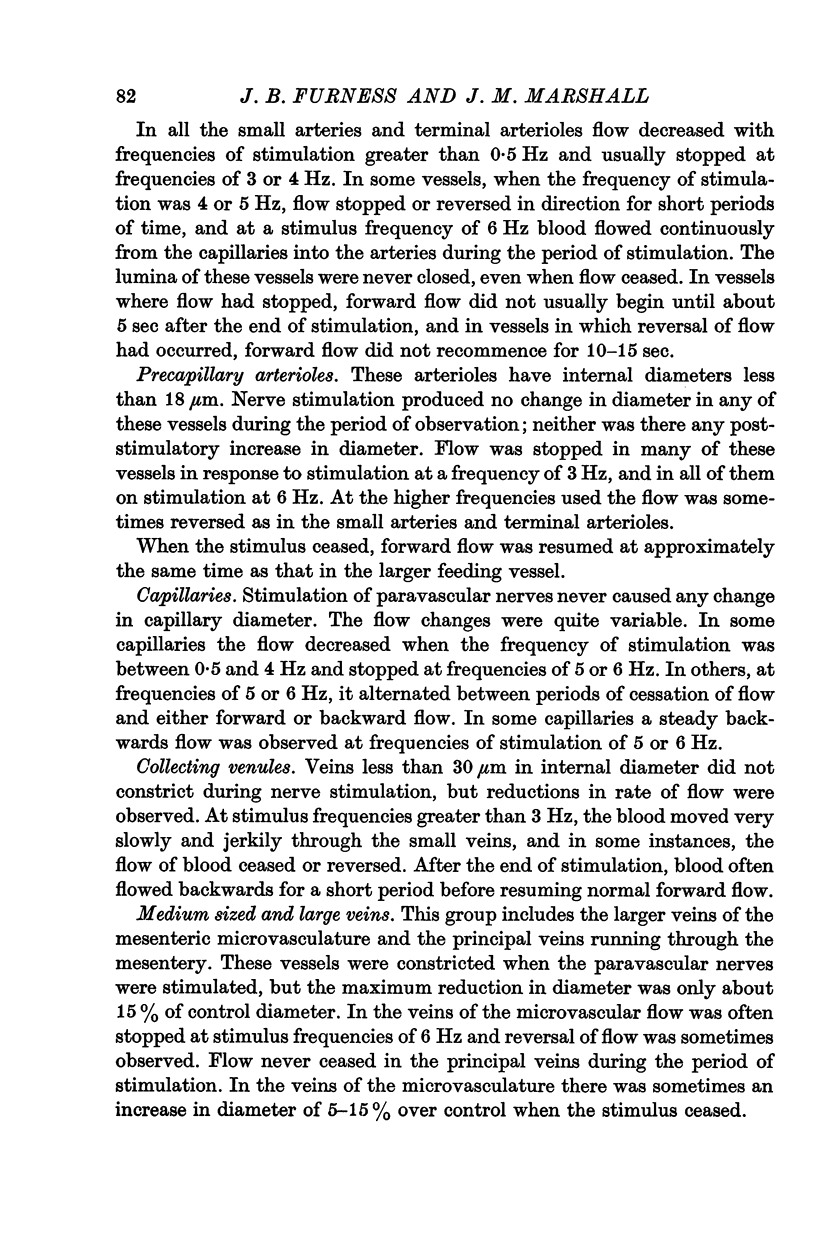
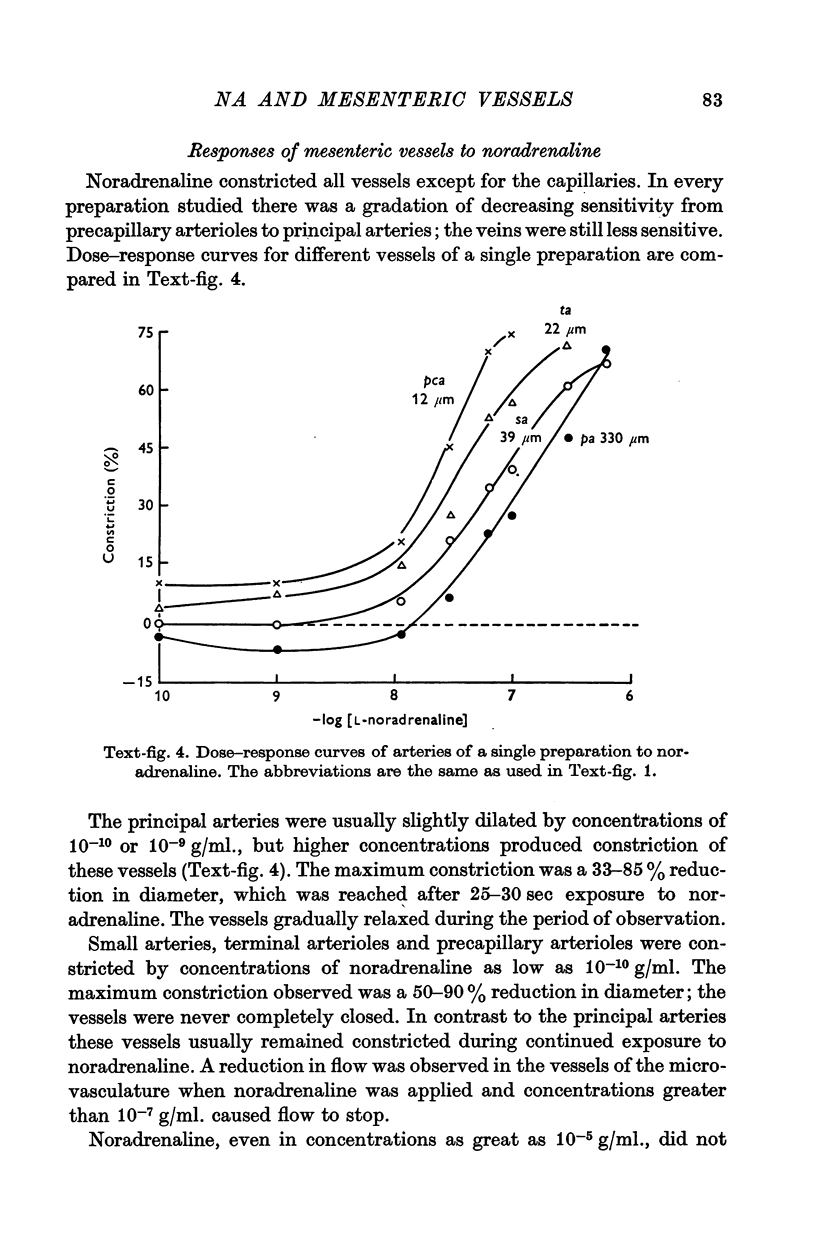
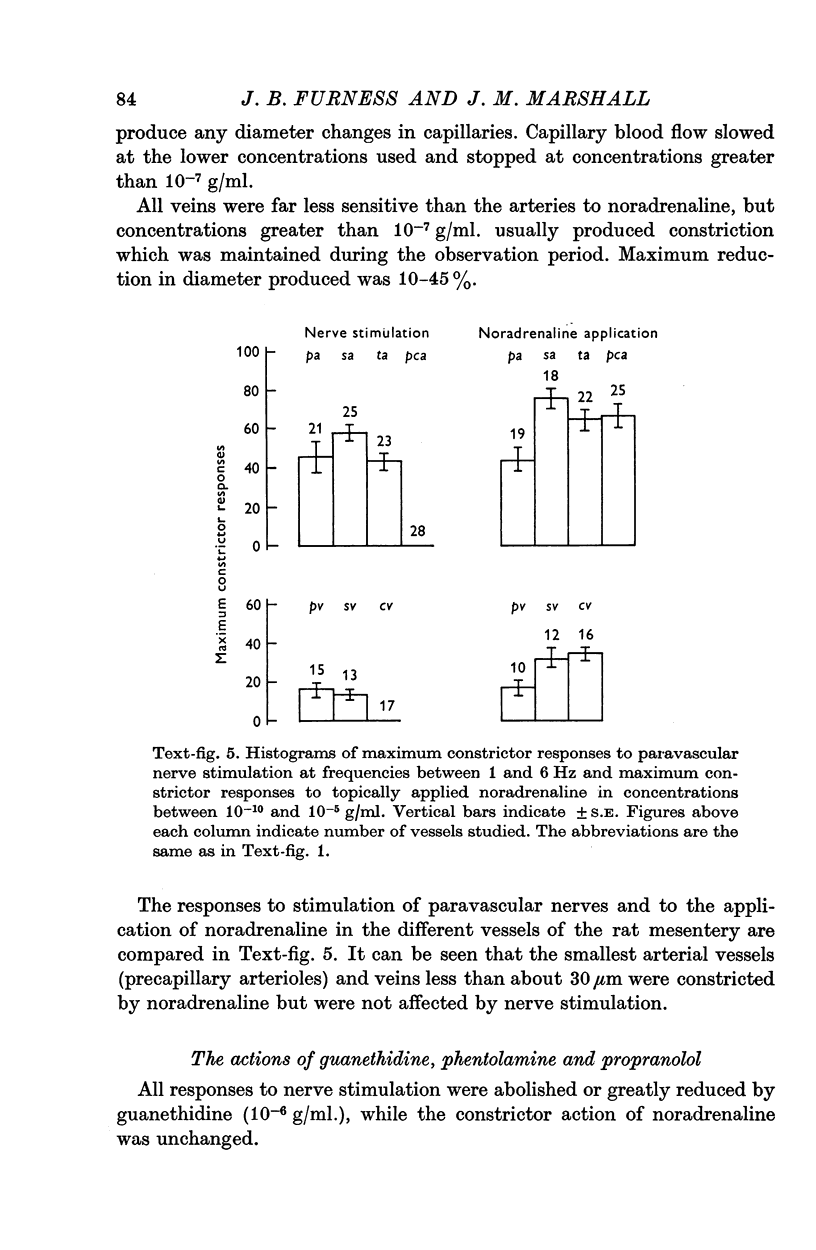
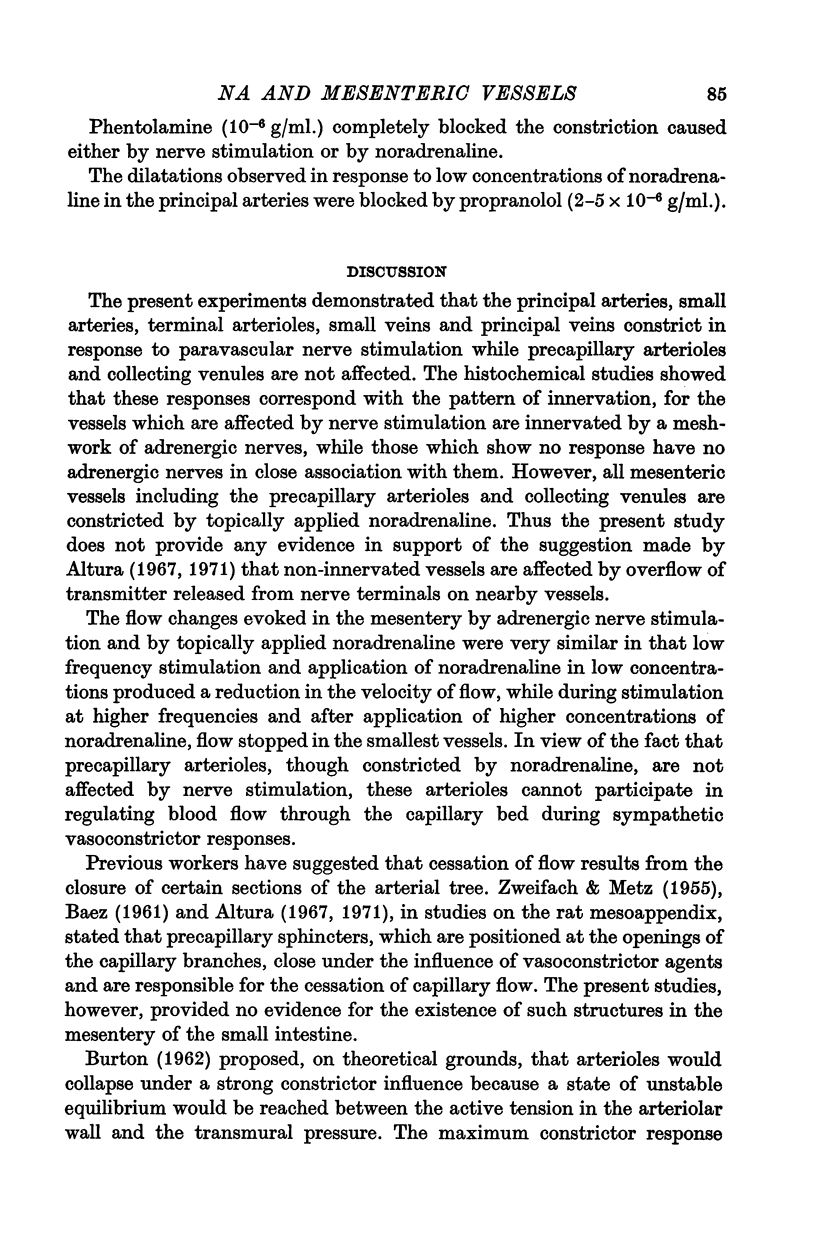
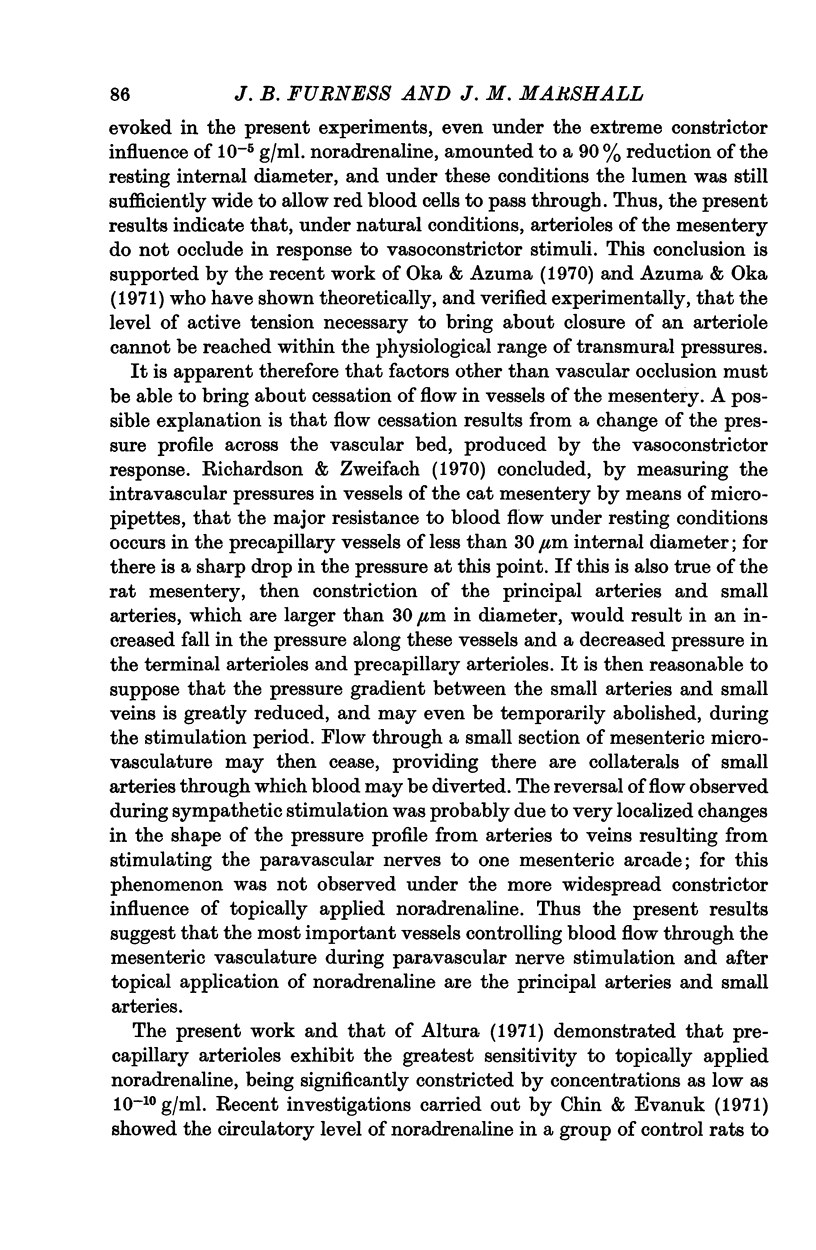
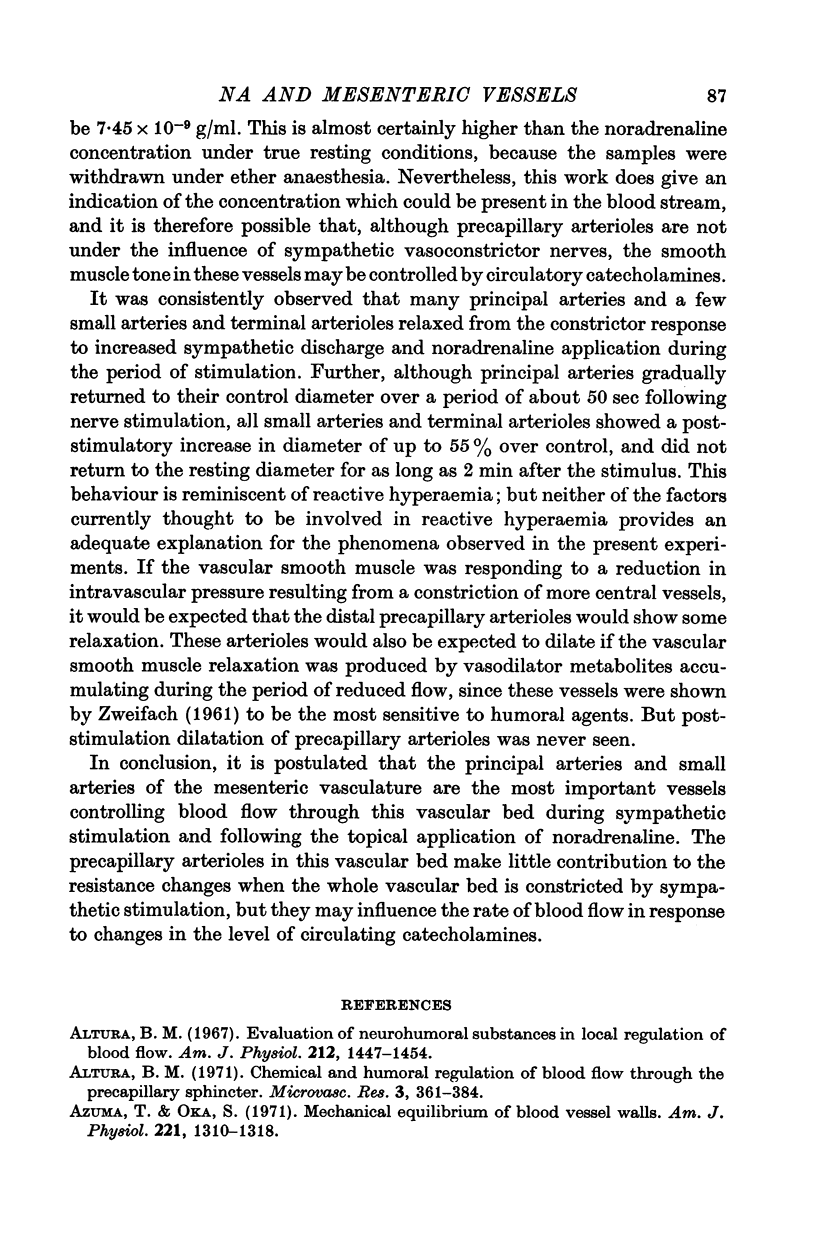
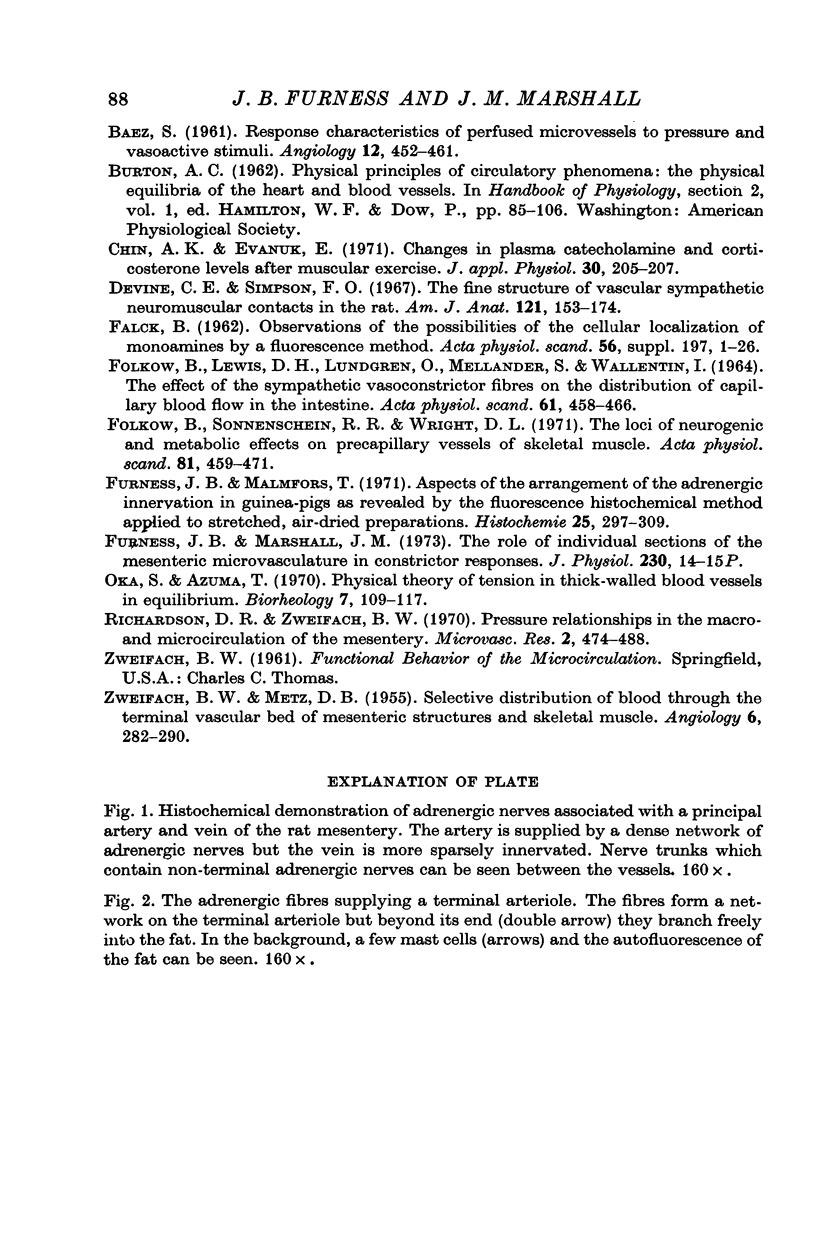
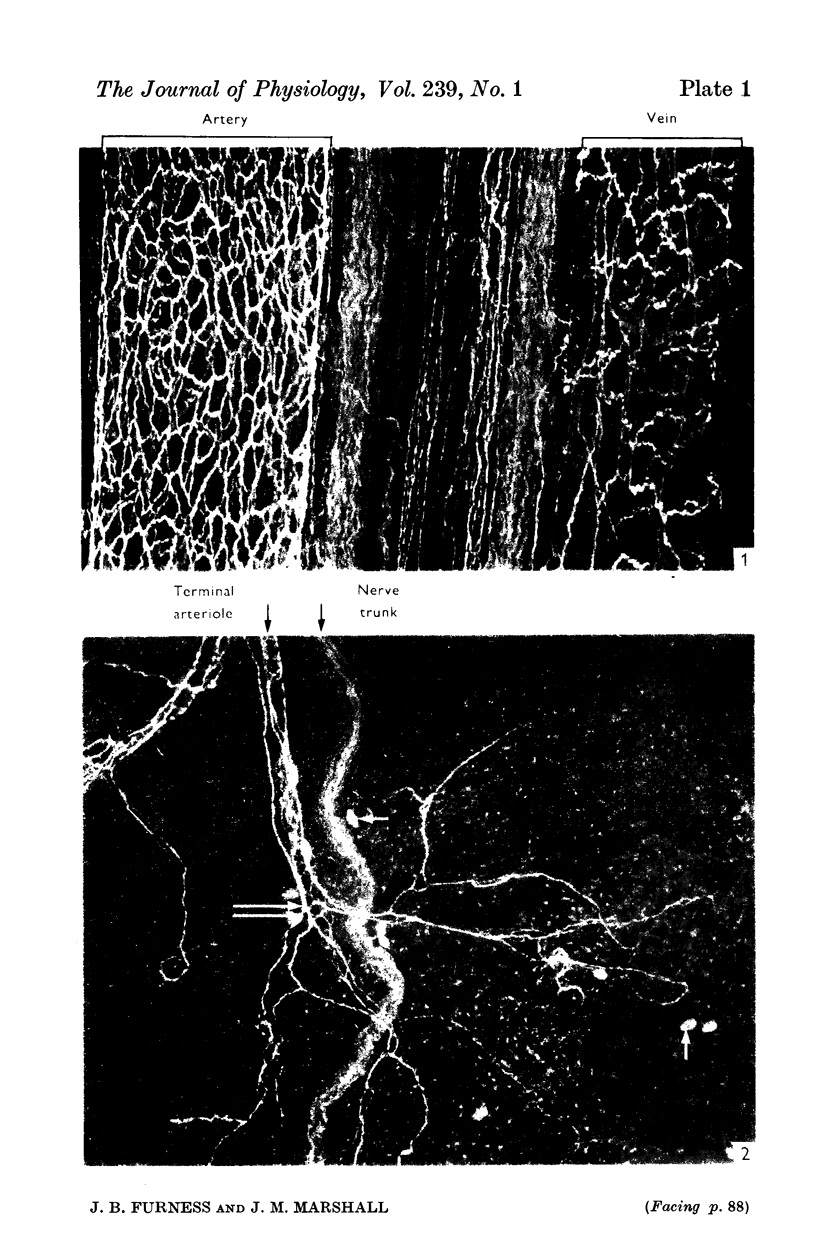
Images in this article
Selected References
These references are in PubMed. This may not be the complete list of references from this article.
- Altura B. M. Evaluation of neurohumoral substances in local regulation of blood flow. Am J Physiol. 1967 Jun;212(6):1447–1454. doi: 10.1152/ajplegacy.1967.212.6.1447. [DOI] [PubMed] [Google Scholar]
- Azuma T., Oka S. Mechanical equilibrium of blood vessel walls. Am J Physiol. 1971 Nov;221(5):1310–1318. doi: 10.1152/ajplegacy.1971.221.5.1310. [DOI] [PubMed] [Google Scholar]
- BAEZ S. Response characteristics of perfused microvessels to pressure and vasoactive stimuli. Angiology. 1961 Oct;12:452–461. doi: 10.1177/000331976101201004. [DOI] [PubMed] [Google Scholar]
- Devine C. E., Simpson F. O. The fine structure of vascular sympathetic neuromuscular contacts in the rat. Am J Anat. 1967 Jul;121(1):153–173. doi: 10.1002/aja.1001210110. [DOI] [PubMed] [Google Scholar]
- FOLKOW B., LEWIS D. H., LUNDGREN O., MELLANDER S., WALLENTIN I. THE EFFECT OF THE SYMPATHETIC VASOCONSTRICTOR FIBRES ON THE DISTRIBUTION OF CAPILLARY BLOOD FLOW IN THE INTESTINE. Acta Physiol Scand. 1964 Aug;61:458–466. [PubMed] [Google Scholar]
- Folkow B., Sonnenschein R. R., Wright D. L. Loci of neurogenic and metabolic effects on precapillary vessels of skeletal muscle. Acta Physiol Scand. 1971 Apr;81(4):459–471. doi: 10.1111/j.1748-1716.1971.tb04924.x. [DOI] [PubMed] [Google Scholar]
- Furness J. B., Malmfors T. Aspects of the arrangement of the adrenergic innervation in guinea-pig as revealed by the fluorescence histochemical method applied to stretched, air-dried preparations. Histochemie. 1971;25(4):297–309. doi: 10.1007/BF00278223. [DOI] [PubMed] [Google Scholar]
- Oka S., Azuma T. Physical theory of tension in thick-walled blood vessels in equilibrium. Biorheology. 1970 Aug;7(2):109–117. doi: 10.3233/bir-1970-7203. [DOI] [PubMed] [Google Scholar]
- Richardson D. R., Zweifach B. W. Pressure relationships in the macro- and microcirculation of the mesentery. Microvasc Res. 1970 Oct;2(4):474–488. doi: 10.1016/0026-2862(70)90040-3. [DOI] [PubMed] [Google Scholar]
- ZWEIFACH B. W., METZ D. B. Selective distribution of blood through the terminal vascular bed of mesenteric structures and skeletal muscle. Angiology. 1955 Aug;6(4):282–290. doi: 10.1177/000331975500600402. [DOI] [PubMed] [Google Scholar]




